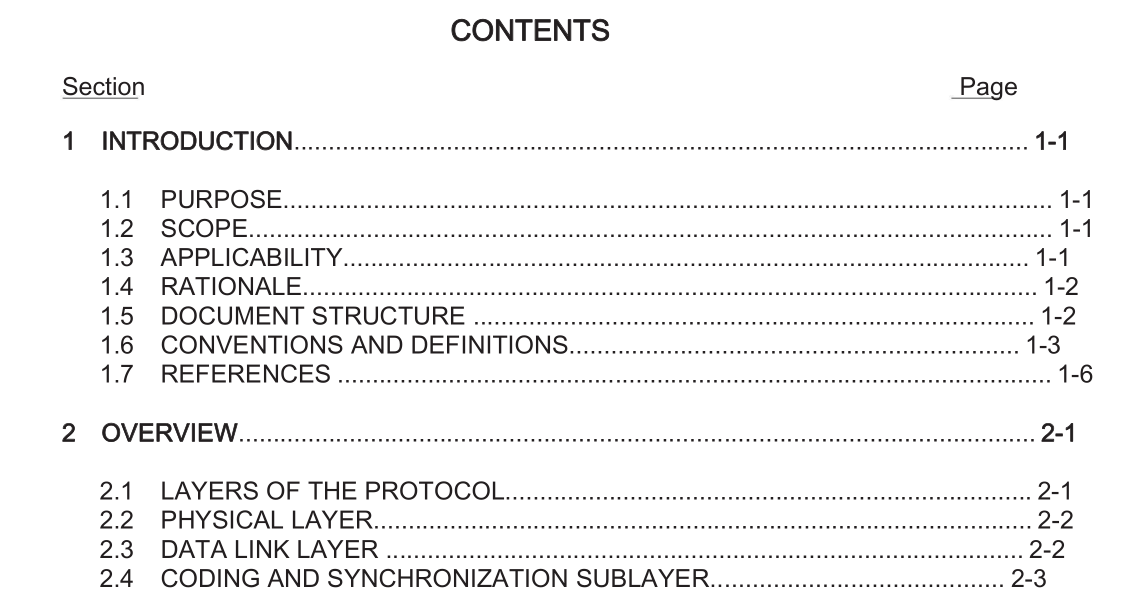BS ISO 21459:2015 pdf download.Space data and information transfer systems — Proximity-1 space link protocol — Coding and synchronization sublayer
1.1 PURPOSE
The purpose of this Recommended Standard is to specify synchronization and channel coding schemes used with the Proximity-1 Data Link Protocol (reference [3]) and Physical Layer (reference [4]). Proximity space links are defined to be short-range, bi-directional, fixed or mobile radio links, generally used to communicate among probes, landers, rovers, orbiting constellations, and orbiting relays. These links are characterized by short time delays, moderate (not weak) signals, and short, independent sessions.
1.2 SCOPE
This Recommended Standard defines synchronization and channel coding schemes for Proximity-1 links in terms of:
a) the services provided to the users of this specification;
b) data formats; and
c) the procedures performed to generate and process the data formats.
It does not specify:
a) individual implementations or products;
b) the methods or technologies required to perform the procedures; or
c) the management activities required to configure and control the protocol.
The Coding and Synchronization Sublayer is part of the Data Link Layer. The rest of the Data Link Layer is defined in the separate CCSDS Recommended Standard entitled, Proximity-1 Space Link Protocol—Data Link Layer (reference [3]). The Physical Layer is defined in the separate CCSDS Recommended Standard entitled, Proximity-1 Space Link Protocol—Physical Layer (reference [4]).
1.3 APPLICABILITY
This Recommended Standard applies to the creation of Agency standards and to future data communications over space links between CCSDS Agencies in cross-support situations. It applies also to internal Agency links where no cross-support is required. It includes specification of the services and protocols for inter-Agency cross support. It is neither a specification of, nor a design for, systems that may be implemented for existing or future missions.
The Recommended Standard specified in this document is to be invoked through the normal standards programs of each CCSDS Agency and is applicable to those missions for which cross support based on capabilities described in this Recommended Standard is anticipated. Where mandatory capabilities are clearly indicated in sections of the Recommended Standard, they must be implemented when this document is used as a basis for cross support. Where options are allowed or implied, implementation of these options is subject to specific bilateral cross support agreements between the Agencies involved.
1.4 RATIONALE
The CCSDS believes it is important to document the rationale underlying the recommendations chosen, so that future evaluations of proposed changes or improvements will not lose sight of previous decisions. Concept and rationale behind the decisions that formed the basis for Proximity-1 is documented in the CCSDS Proximity-1 Space Link Green Book (reference [E1]).
1.5 DOCUMENT STRUCTURE
This document is divided into three numbered sections and four annexes:
a) section 1 presents the purpose, scope, applicability and rationale of this Recommended Standard and lists the conventions, definitions, and references used
throughout the document;
b) section 2 provides an overview of Proximity-1 synchronization and channel coding;
c) section 3 specifies convolutional coding;
d) annex A contains the Protocol Implementation Conformance Statement (PICS) proforma for this specification;
e) annex B defines the service provided to the users;
f) annex C defines CRC-32 Coding Procedure;
g) annex D discusses security, SANA, and patent considerations;
h) annex E contains informative references;
i) annex F contains a list of abbreviations and acronyms.
BS ISO 21459:2015 pdf download
